I’ve been raw feeding Jericho since 2017, and I’ve tried all types of raw diets. Complete with a raw cat food premix, PMR, BARF, frankenprey, and whole prey. Most raw feeding models aim to mimic our cat’s natural diet: whole prey.
BARF vs PMR for cats
BARF and PMR raw feeding models focus on whole, fresh foods. Both diets aim to mimic biologically appropriate raw feeding for cats.
The main difference is that BARF typically includes plant-based ingredients and supplements. Whereas PMR includes animal-based ingredients only, more variety, and sometimes whole prey.
BARF ratios for cats are 80% muscle meat, 10% edible bone, 5% organ, and 5% plant-based ingredients and supplements. General PMR ratios for cats are 80-84% muscle meat, 6-10% edible bone, and 10% organs (5% liver and 5% additional secreting organs).
These ratios are often adjusted based on the needs of the individual cat. Some cats do better with less edible bone.
Both diet models are great for cats. But there are some cons to both feeding methods.
Deciding which diet is right for your cat depends on your personal preferences.
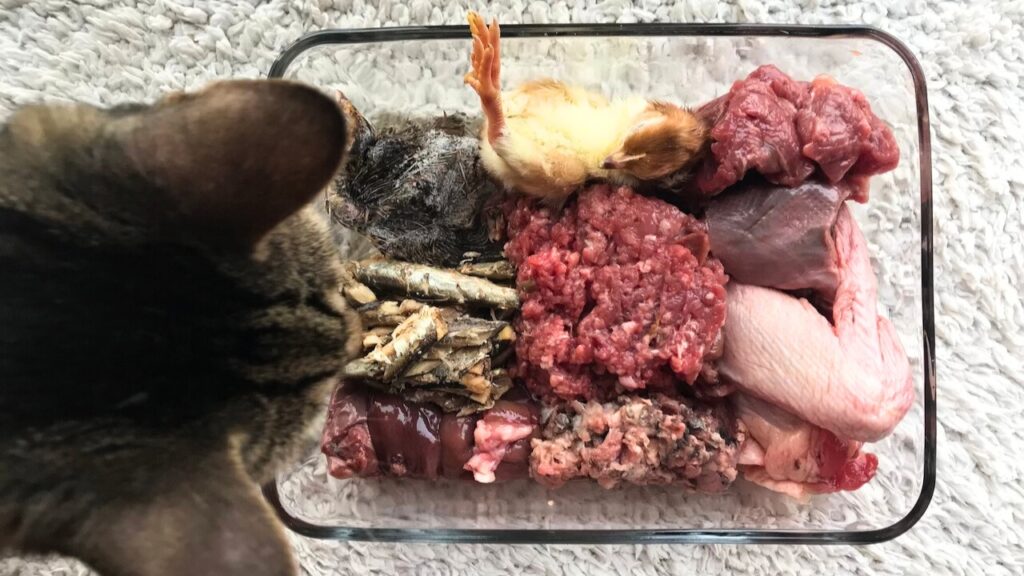
PS – If you’re ready to switch to a healthy raw diet, my Raw Feeding Blueprint is for you!
I’ve created the most supportive plan inside this course! Think, every week is planned out for you with printable trackers, 50+ balanced recipes to choose from, meal prep hacks, and so much more. If you’re ready to make your cat’s raw food at home, my Raw Feeding Blueprint course is for you!
BARF vs PMR for cats guide:
- What is the difference between prey model and BARF model?
- Is BARF and PMR food good for cats?
- Is BARF or PMR better?
- How I feed my cat BARF and PMR
What is the difference between prey model and BARF model?
Honestly, both describe the same thing. We want to do our best to mimic what our cats eat in the wild.
Prey model raw = using specific ratios that mimic whole prey
BARF = Biologically Appropriate Raw Food and/or Bones And Raw Food
Another model you may see is Frankenprey = attempt on whole prey with cuts and pieces put together like Dr. Frankenstein’s Monster
So again, all the same thing essentially.
Cats eat whole prey. So our goal here is to mimic the nutrition that cats should eat.
Therefore, all raw feeding styles are better than kibble. Because cats cannot survive and thrive on dry food only.
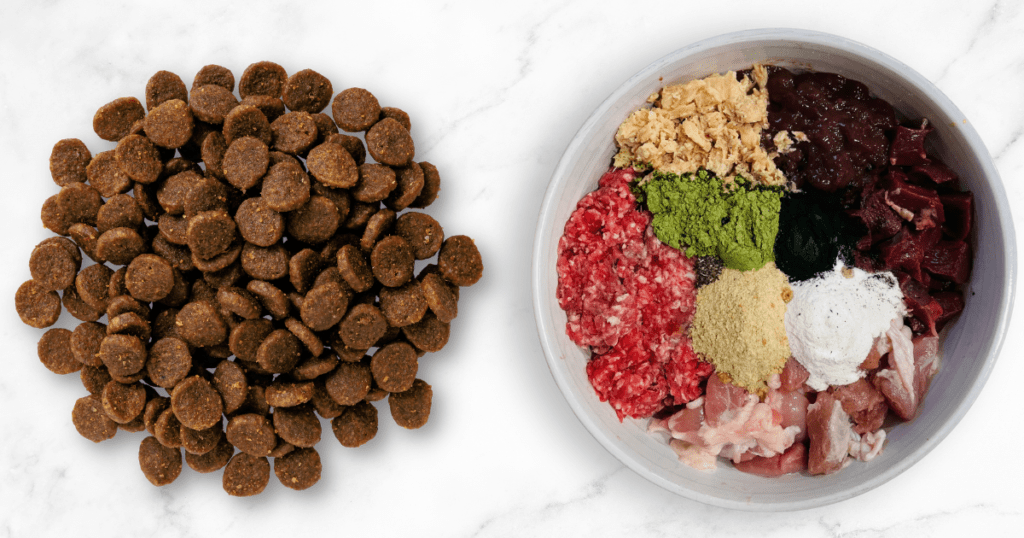
Prey model raw feeding for cats
Prey model raw typically uses ratios based on what whole prey provides. These ratios give us a guideline to follow when we create our cat’s raw diet.
This diet includes whole chunks of meat, whole raw meaty bones, and secreting organs.
Most cat parents who follow PMR do not use supplements. And they do not include plant-based ingredients.
I think where cat parents get confused is that a lot of ground raw cat food companies use “prey model raw” in their descriptions.
These companies use PMR ratios to formulate the food. However, wild cats eat and chew on whole prey and not ground food.
Cats must chew on raw meaty bones. The benefits of raw meaty bones go way beyond proper nutrition!
BARF feeding for cats
Dr. Ian Billinghurst coined the term BARF. His point is that we need to feed our cats (and dogs) biologically-appropriate food instead of high-carbohydrate processed food.
This raw feeding model also includes whole, fresh foods with raw meaty bones.
However, Dr. Billinghurst also suggests including plant-based ingredients and supplements when necessary.
Important note – his books mainly focus on raw feeding dogs. But he does have lower plant-based percentage guidelines for cats.
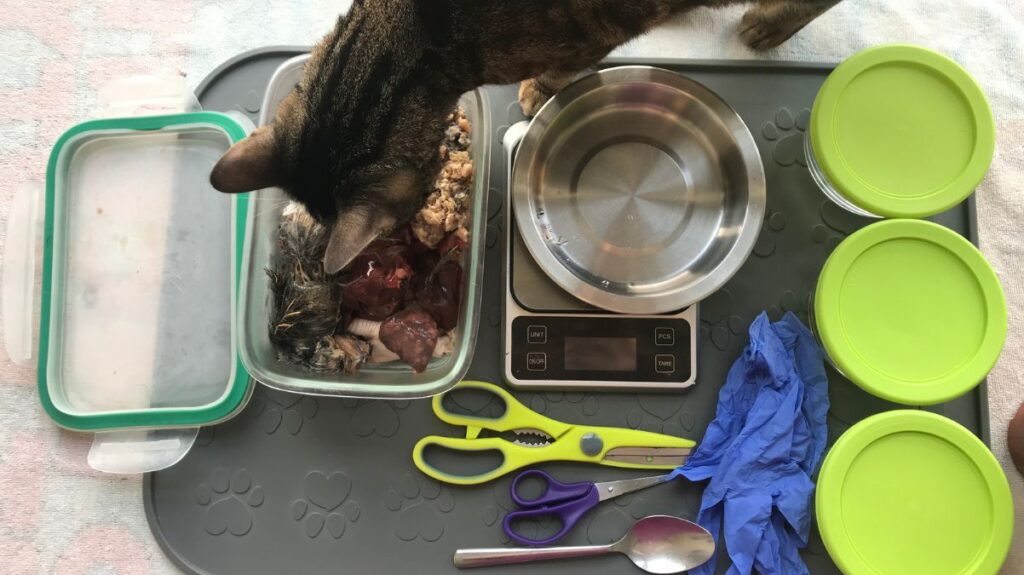
Is BARF and PMR food good for cats?
BARF and PMR are both good food choices for cats. Both raw diet models aim to mimic what our cats eat in the wild.
Most importantly, chewing on raw meaty bones provides loads of benefits for cats.
Raw meaty bones provide the most natural form of calcium in a perfect ratio to phosphorus.
Chewing and gnawing on raw meaty bones provide important dental benefits, mental stimulation, and enrichment.
It also slows down the time the cat takes to finish his meal. This can prevent cat parents from overfeeding and therefore prevent obesity.
Mental stimulation and enrichment are big factors in preventing obesity. Not to mention also feeding an appropriate diet.
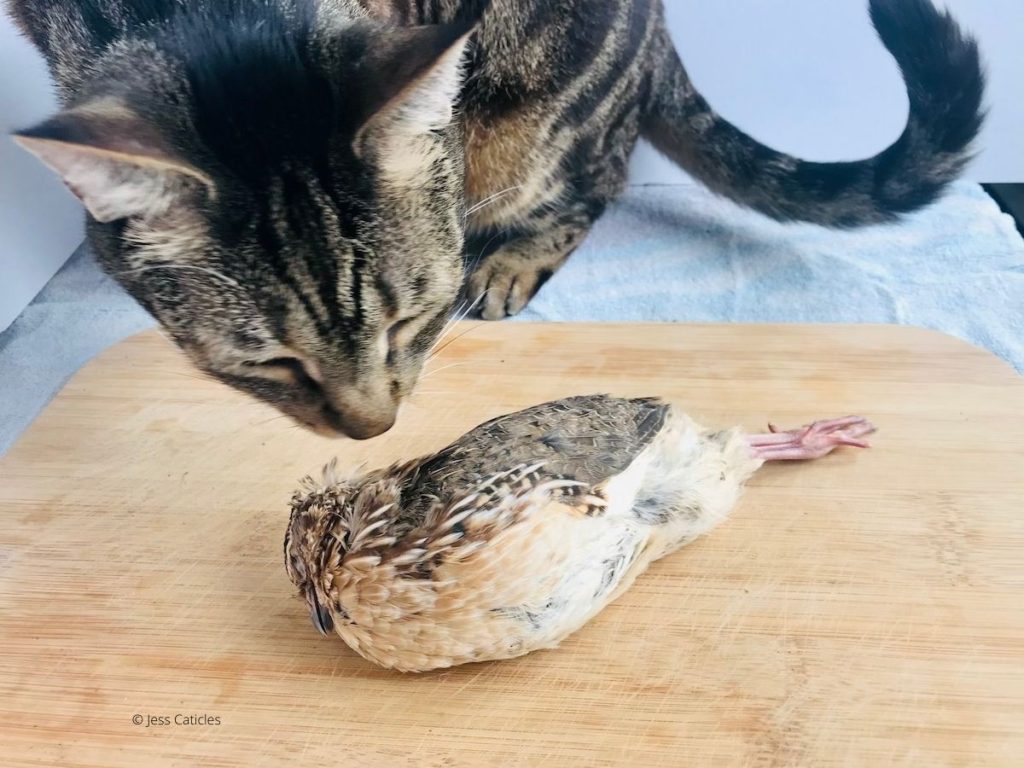
Is BARF or PMR better?
All styles of raw feeding are great for cats. But there are some pros and cons to be aware of.
80 10 10 isn’t always a complete diet. So these cons are very important.
BARF and PMR both have the same pros:
- Simple
- Biologically-appropriate
- Includes whole raw meaty bones
- Focuses on whole foods
Now for the cons of each…
BARF diet cons:
- May include veggies and fruits
- May include synthetic and/or natural supplements
There’s nothing wrong with natural supplements.
But I’m just pointing out the difference here compared to the PMR and frankenprey diet models.
PMR diet cons:
- Some cat parents may not have access to variety
- No supplements could mean nutritional deficiencies (especially without variety)
- Lots of people are scared of maths (I don’t get it lol)
These cons are unique to the individual.
Some PMR feeders are completely against all types of supplements – even natural ones.
They believe that if we feed a variety of proteins and a variety of pieces (muscular meats, secreting/muscular organs, bones) we can achieve balance over time.
Additionally, the NRC, AAFCO, and FEDIAF nutritional guidelines are for overly processed pet foods and not fresh, whole foods.
But wild cats hunt and seek out specific prey based on their needs. They also eat 5-7 different types of prey to meet their dietary needs.
Indoor cats do not hunt. Therefore they cannot seek out any missing nutrients that they need.
Whole prey includes a lot that PMR (usually) doesn’t…
- Brain
- Eyes
- Blood
- Glands
- Skin (maybe raw meaty bones can count)
- Tendons
- Sex organs
- Stomach contents (unless you feed stinky green tripe)
And the list goes on.
Honestly, I see both sides of the argument.
But, as a nutritionist, I go with formulating to the nutritional guidelines since our cats are not hunting for food.
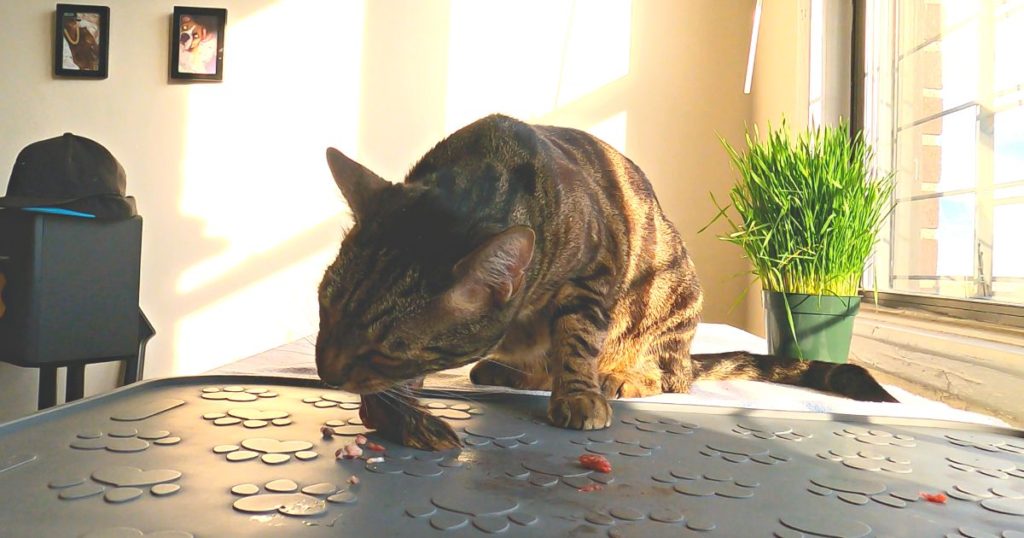
How I raw feed my cat BARF and PMR
I do a combination of every style of raw feeding. And I just say I feed a homemade raw meaty bones and whole prey diet.
Maybe it’s not as quick and punchy. But at least you know exactly what I’m talking about when I say it.
So why raw meaty bones? Why specific ratios? Why whole prey?
My favorite reasons to feed a homemade raw meaty bones and whole prey diet:
- It’s the best way to mimic our cat’s natural diet
- Healthiest and most cost-effective way to feed our cats
- Take complete control of your cat’s diet
- We are honoring and respecting what YAHUAH intended
The cost of homemade cat food is an excellent benefit. Save on the food itself and save in the long-term because your cat is eating the best.
Rather than relying on people to tell me what to feed MY cat…
I rely on our Creator. He created all things and knows what’s best for all of us.
So I do my best to mimic what our cats eat in their natural, YAH-created environment.
I include minimal supplements in Jericho’s diet.
Final thoughts on BARF vs PMR for cats
All styles of raw feeding aim to mimic the same thing.
We want to feed our cats as close as possible to their natural diet.
Variety is key, and it’s great to do a combination of all three.
Especially if you don’t have access to a large variety of proteins and cuts of meat, bones, and organs.
Natural supplements are always better than synthetic. But make sure the diet is mainly whole, fresh foods.
Ready to switch to raw for a happier cat?
Grab my Raw Feeding Blueprint and get the same plan that 564+ cat parents used to switch to a healthy raw diet easily and confidently. Plus 50+ balanced raw recipes, meal prep tips, and so much more!
